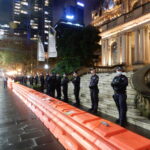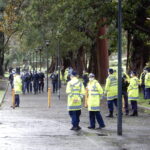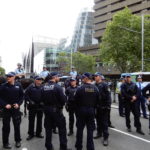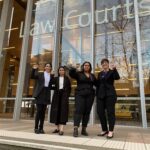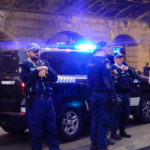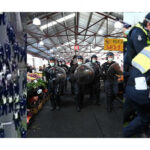First Nations Mobilising Was Overpoliced, Again, at Sydney’s Djab Wurrung Rally
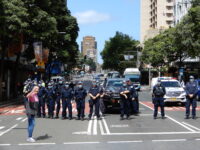
“This is about black liberation in this country,” said Gwenda Stanley, as she stood on Sydney Town Hall steps on 7 November.
The Gomeroi woman was addressing a crowd of demonstrators about bringing an end to the “cultural genocide that’s still happening in Australia in 2020”.
The protesters were gathered for the Protecting Sacred Country: Solidarity With Djab Wurrung rally, which saw hundreds turn out to express support over the recent desecration of a directions tree at the sacred Djab Wurrung site that continues to be threatened by a Victorian highway project.
Stanley pointed out that while Australian authorities are at pains to protect Captain Cook statutes at the same time, they’re quite willing to roll in and chop down a centuries-old sacred tree to make way for a new road.
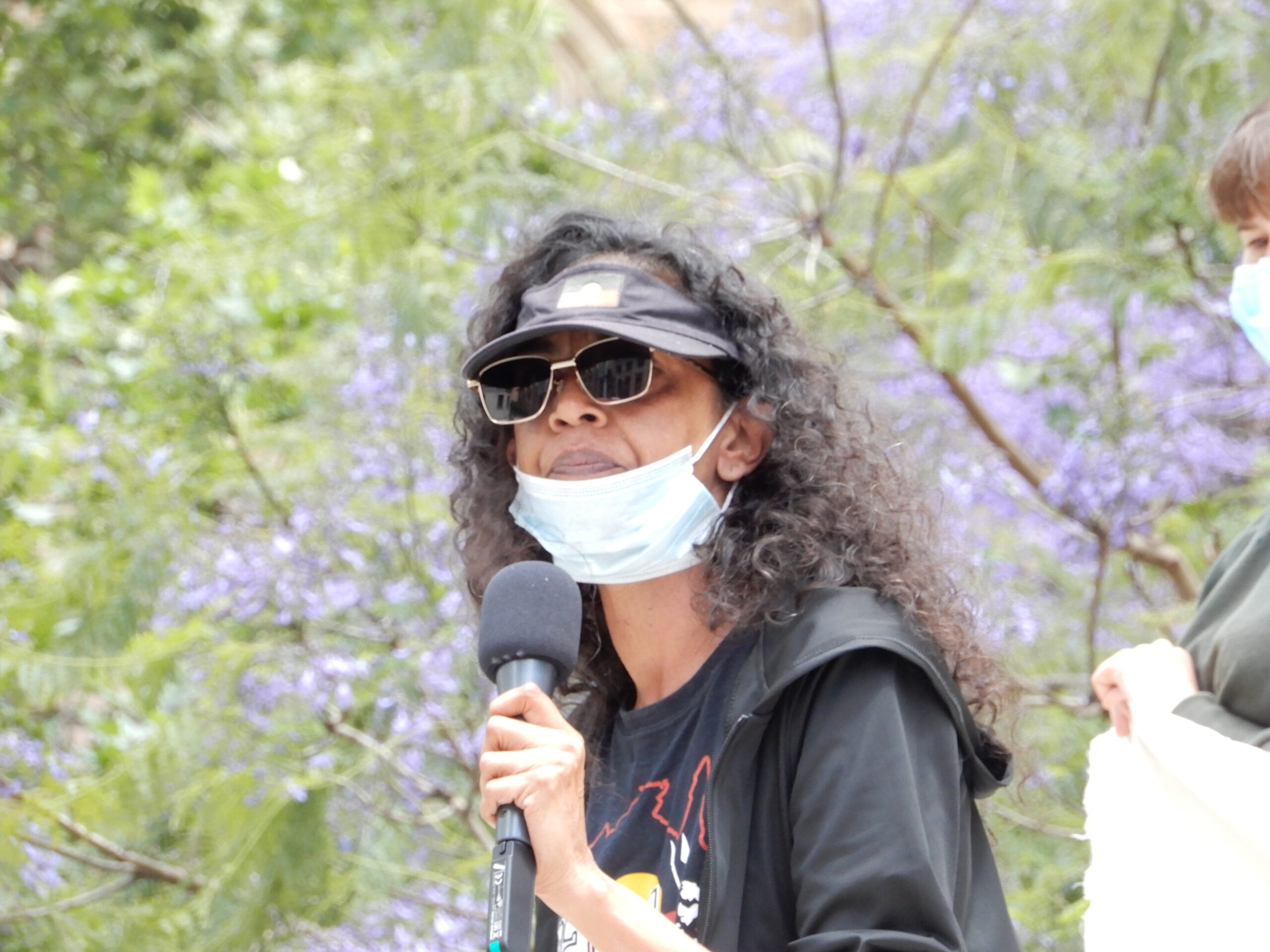
The activist further drew a link to the proposal Santos has to destroy Gomeroi country by drilling 850 coal seam gas wells through the Pilliga and into the Great Artesian Basin in northern NSW.
“You want to talk about reconciliation?” she added. “Reconciliation starts with you giving back our land.”
And as Stanley raised “the systemic racism that still exists”, as well as the overincarceration of her people, what seemed starkly obvious was the usual saturation policing of First Nations protest that was happening at the event was no different from the other injustices being called out on the day.
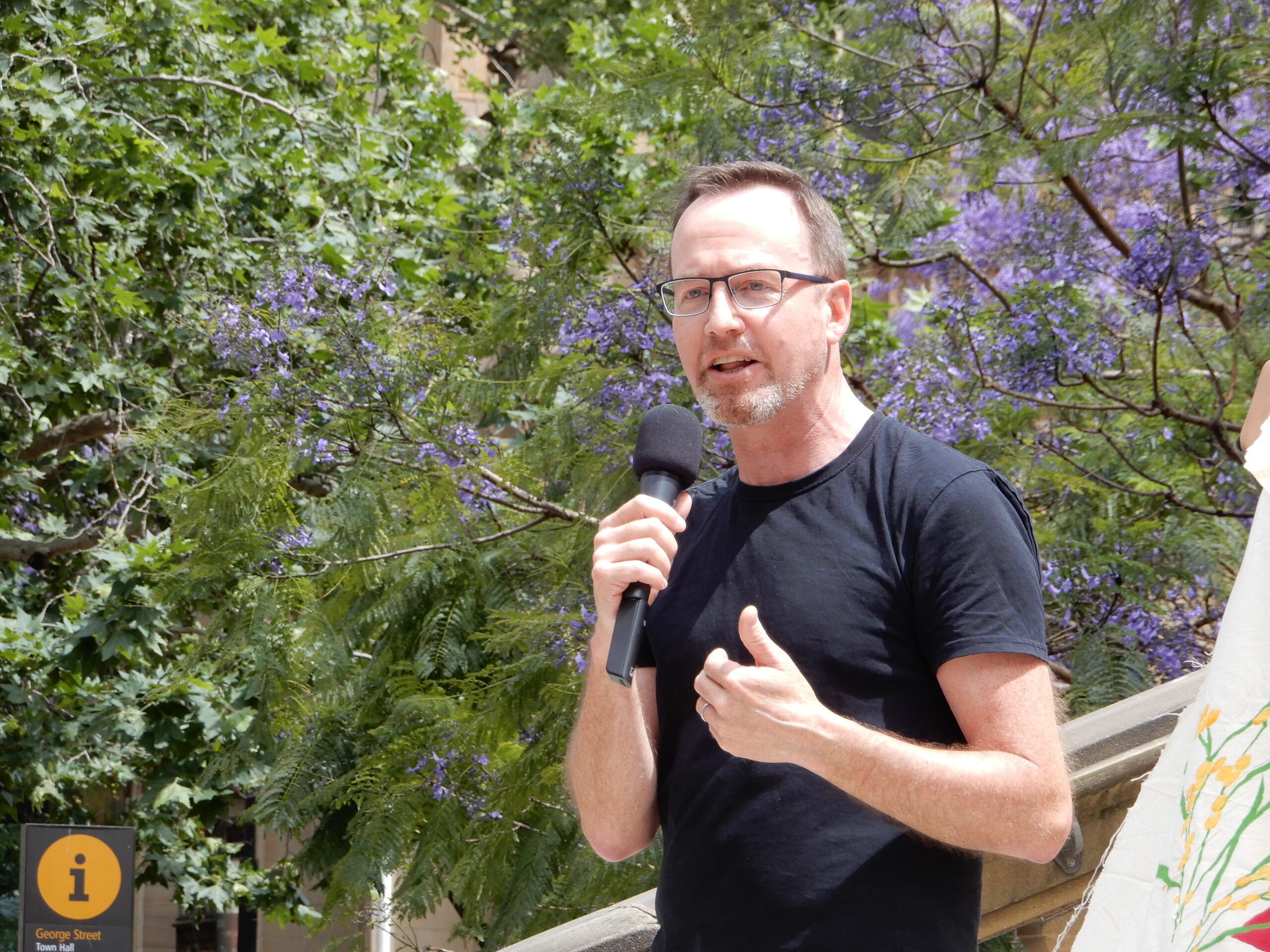
The thick blue line
“It’s a First Nations protest. It’s about Aboriginal justice. So, we get hundreds of police every time,” said NSW Greens MLC David Shoebridge, as he took the microphone. “I say to the police, ‘Stop wasting our public resources. Stop overpolicing First Nations people.’”
Early arrivals at the Saturday afternoon rally were greeted by a line of police officers standing along the bottom step at Sydney Town Hall, blocking access to the rest of the platform from where speakers usually address protest crowds.
Standing before the thin blue line, Shoebridge was speaking on his phone, trying to get the matter sorted.
The line of officers blocking the first step, eventually retreated to the top of the staircase, where they continued to hover above protesters during the rally, while dozens more police officers surrounded the crowd from behind.
“The head guy from Taskforce Odin – the riot police – falsely said that the reason they were blocking the steps was that it was a direction from the City of Sydney,” Shoebridge explained. “That was plainly false. It was police trying to intimidate Black Lives Matter protesters again.”
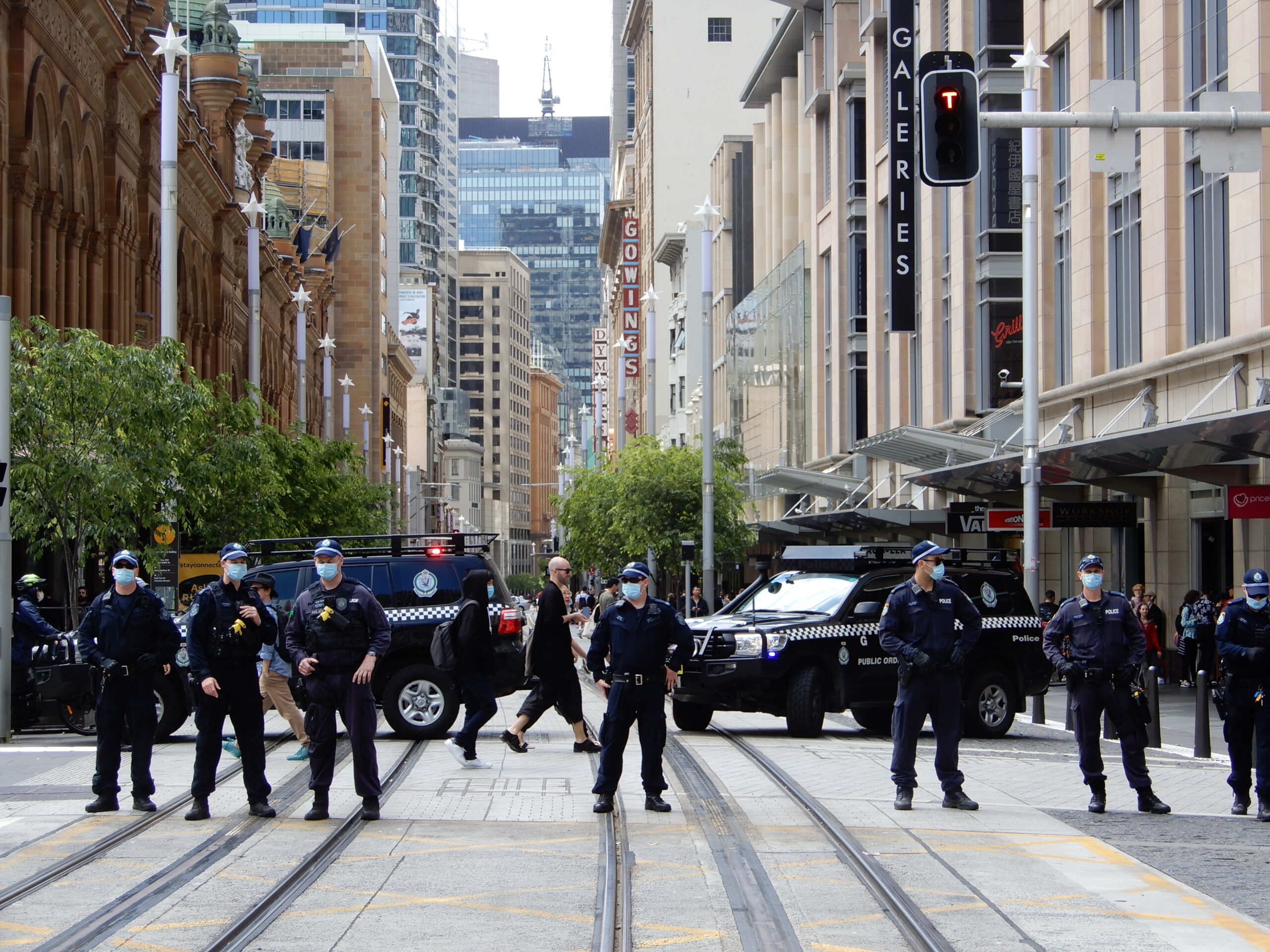
Silencing First Nations
The overpolicing of Aboriginal and Torres Strait Islander mobilisations is nothing new in this country.
At their inception, a large part of the mandate Australian law enforcement bodies had was to quell the First Nations resistance to colonisation. And this current example is an extension of that.
However, with the lifting of COVID-19 restrictions in NSW – which coincided with a reigniting of the Black Lives Matter movement both internationally and domestically – the overpolicing and silencing of Aboriginal demonstrations has been more pronounced.
NSW police took the organisers of the first mass BLM action that took place in Sydney on 6 June to court to prohibit it. And while successful at first, a last minute reprieve saved the thousands of protesters from receiving fines and arrest at the hands of the hundreds of officers policing the rally.
The state police continued to take Black Lives Matter rally after Black Lives Matter rally to court, until one judge ruled to stop a protest set for 28 July. And when demonstrators still turned up in small numbers at the Domain, officers pulled an unofficial protest ban out of their toolbox.
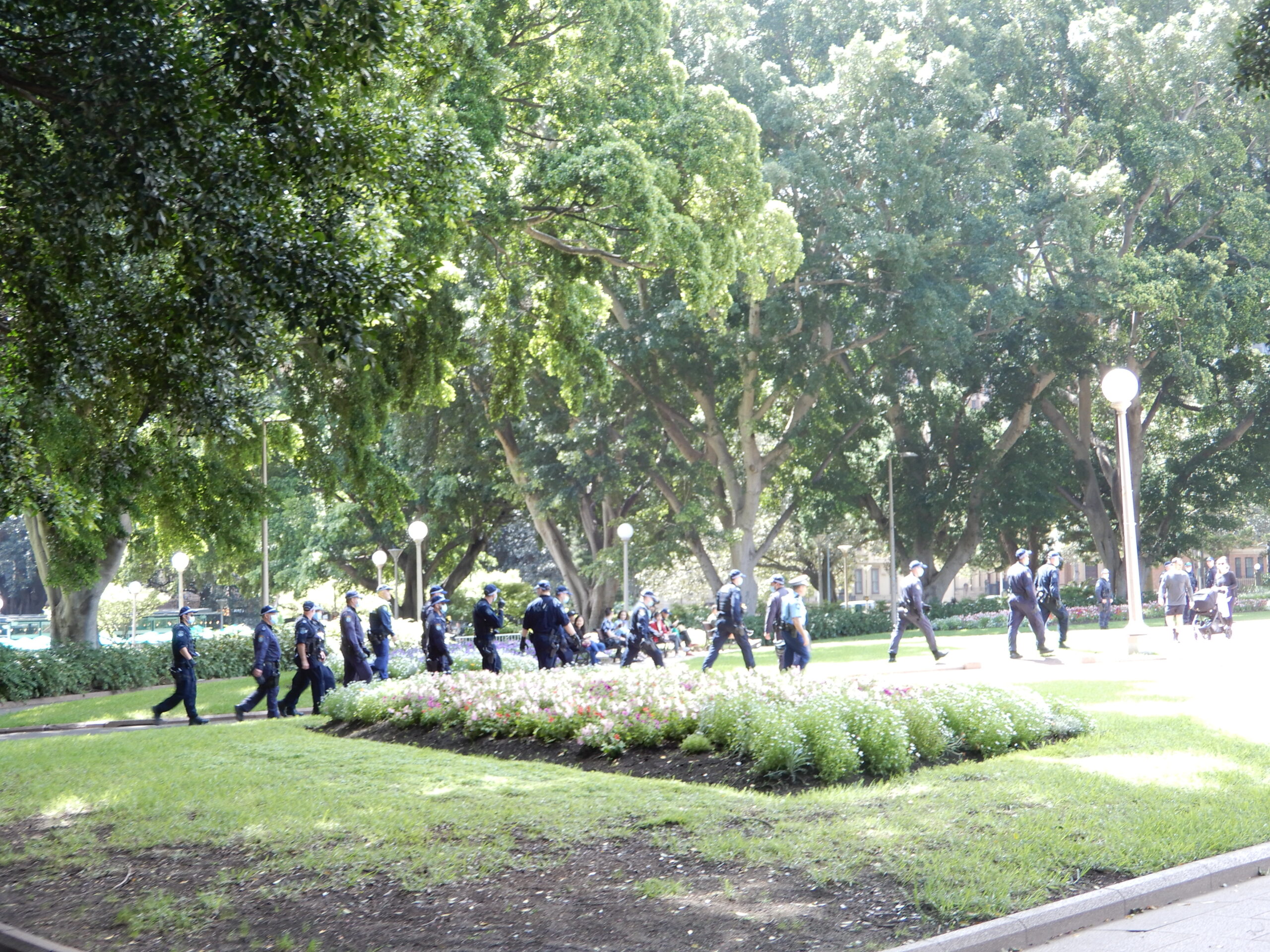
A prejudicial focus
“As always with protests within this movement, it was heavily, heavily policed,” said Seth Dias, a spokesperson for ASEN (the Australian Student Environment Network): the group that organised the Djab Wurrung solidarity rally.
“We were more or less surrounded by the police while the rally was happening,” he continued. “They tried to force us to march on the footpath, but we were able to march up the road. And then in Hyde Park there was a significant police presence there as well.”
Dias went on to explain that the excessive show of force at the peaceful protest was simply more of the same, and “if you’ve been to an Indigenous rights rally over the last few years, you find that they’re way more policed than any other social movement”.
“This is largely racist,” the uni student told Sydney Criminal Lawyers. “It’s also the fact that a lot of the protests around this issue are aimed at the police. When you look at Black Lives Matter, that’s about police violence. Even the Djab Wurrung protest is about the heavy-handedness of police.”
The BLM movement was sparked this year by the police killing of George Floyd in the US. And it led to questions being raised around the racism present in Australian policing and corrections systems that leads to the brutalisation of First Nations people, as well as their continuing deaths in custody.
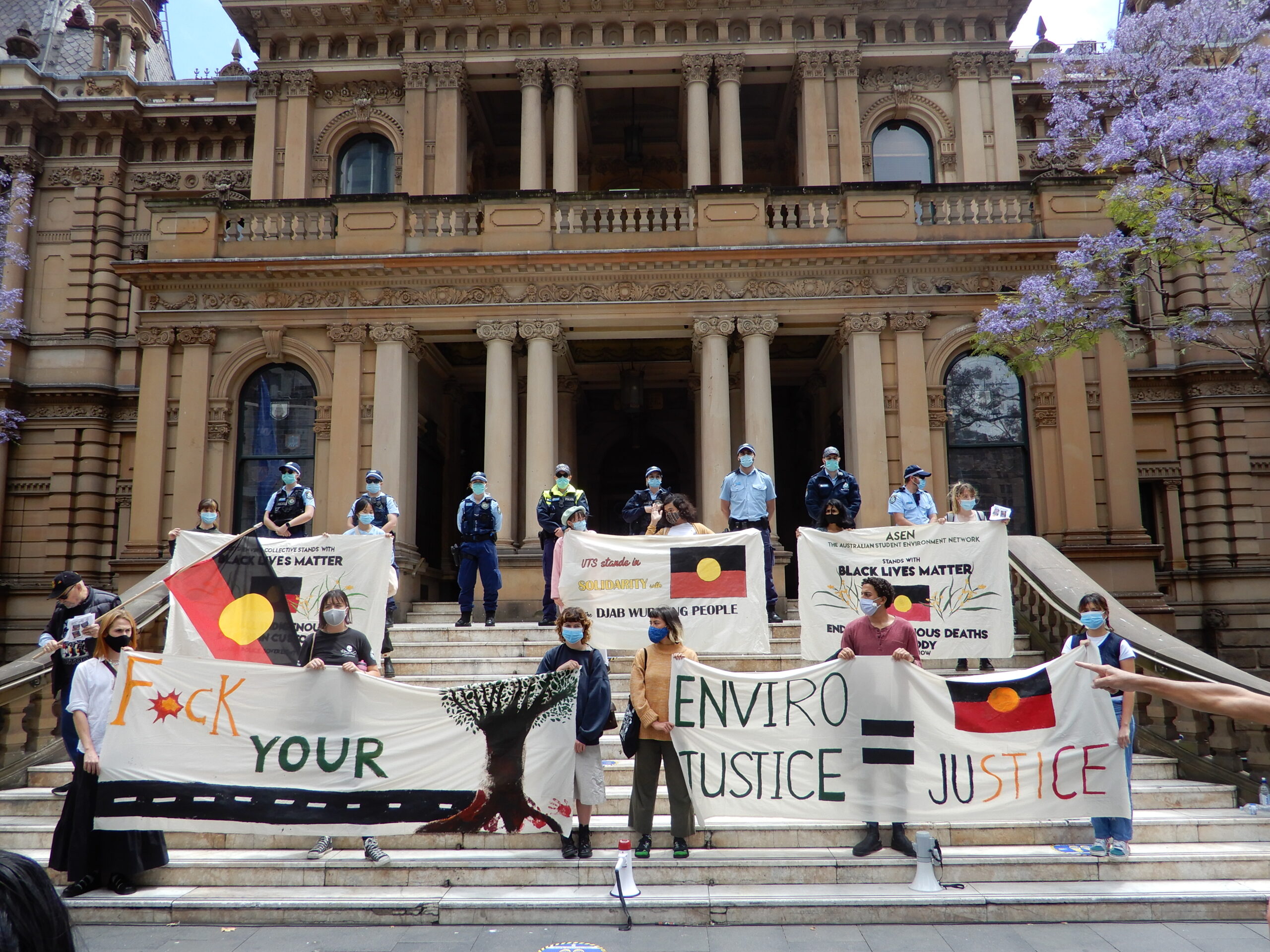
The colonising project
“People talk about invasion and colonialism like they’re a one-off event, they’re not. They’re a structure,” said FISTT spokesperson Lynda-June Coe. “And you only have to look around at the overrepresentation of police here today to get a clear indication of how threatened they are.”
The Wiradjuri and Badu Island woman asserts that there’s an “undeclared war” going on in this country, with one symptom being “the desecration of sacred sites”.
A Victorian Supreme Court injunction has currently brought the highway construction at the Djab Wurrung sacred site to a standstill until 19 November.
On the day following the felling of the 350-year-old Directions Tree, Victoria police moved in and forcibly removed 60 protesters from the site.
“You need to show up in force to uphold the lie that you have come here on peaceful terms,” Coe finished up. “You are still committing an act of erasure. Your system is still intent on eliminating a peaceful and defenceless people.”


